"You build on failure. You use it as a stepping stone. Close the door on the past. You don't try to forget the mistakes, but you don't dwell on it. You don't let it have any of your energy, or any of your time, or any of your space." -Johnny Cash
This past week at Starts With A Bang saw quite a lot go down, and you were with me for all of it, including one of the toughest posts (as far as being out of my area-of-expertise) I've ever written. Here's what we've covered, in case you missed anything:
- Does quantum gravity need string theory? (for Ask Ethan),
- More to learn (about my June 22 theatre event, for our Weekend Diversion),
- The Milky Way's largest star cluster (for Mostly Mute Monday),
- The road less traveled... to quantum gravity (a Lee Smolin interview with Sabine Hossenfelder),
- A quantum of parody (on the Journal of Jocular Physics, by Paul Halpern),
- What's the third most common element?, and
- What is the weak force? (for a bonus Throwback Thursday).
In addition to these, I had a new piece over at Forbes:
You all said so much and I don’t want to waste any time, so it’s onto your Comments of the Week!
Image credit: Luca Pozzi, via http://science.psu.edu/alert/photos/research-photos/physics/Ashtekarear….
From Sinisa Lazarek on quantum gravity (and GR): "In the middle of the article you write: “Thanks to the properties of General Relativity itself, there are some things we already know… ” and then you write about standard model particles, spins etc..
Shouldn’t it be Quantum Mechanics or Standard Model in that sentence instead of GR? If not, then the real question is how GR gives us info on spins, particle types etc..?"
I credit GR with giving us this knowledge, because it's so different from all our other theories of the forces out there:
- it's based off of a rank-2 tensor,
- it emits gravitational radiation where there are only four non-zero components (all space-space components) of the stress-energy tensor,
- and where the simple, single point-mass solutions have only four (diagonal) non-zero components.
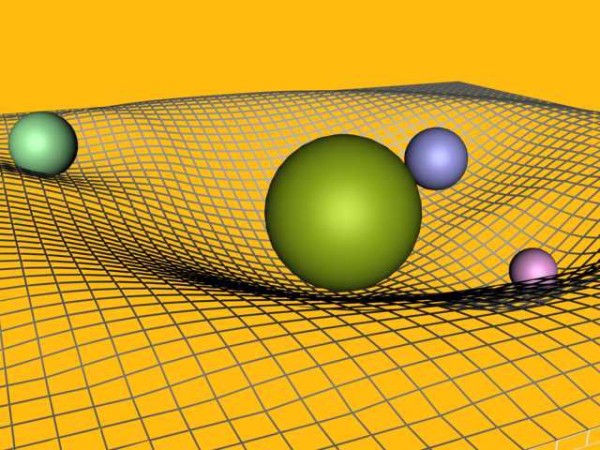 Image credit: Ethan Shipulski, via http://mindblowingphysics.pbworks.com/w/page/52081285/Graviton%202012.
Image credit: Ethan Shipulski, via http://mindblowingphysics.pbworks.com/w/page/52081285/Graviton%202012.
These are things that pop right out of GR, and yet those very things are what tell us:
- the speed of gravity is the speed of light,
- the force-carrying particle of any quantum theory of gravity must be massless with a spin of 2,
- and the gravitational force law looks like 1/r^2 at large distances from a mass, but looks more steep close to one.
Yes, there are some things we don't know about a quantum theory of gravity, but the second one in particular, as quantum-y as it sounds, is something we learn from GR alone.
Image credit: © WGBH Educational Foundation, via http://www.pbs.org/wgbh/nova/physics/conversation-with-brian-greene.html.
From DeathThreat McDunderhead: "You’re such a reasonable educated man when it comes to more accessible topics in science but when it comes to something that goes well beyond your expertise, like quantum gravity or string theory, you’re nothing else than just another parrot of all the laymen’s misconceptions. Pretty much everything you wrote in your text, from A to Z, is wrong in some very fundamental way."
If you want to make the argument that -- thus far -- string theory is the most promising of the options out there for the things it has achieved, that's a legitimate argument to make. The fact that you can put the standard model particles in and have the right forces and interactions come out of the equations is remarkable. The fact that you can get a theory that contains general relativity and the standard model within it is fantastic, and worth exploring further. It's the leading idea for a good reason: it has more compelling things to offer than anything else.
But don't think for a second that means by any stretch that you have found the answer when you talk of string theory this way. Lots of ideas with compelling things to offer are not physically valid (at least, so far): technicolor, SUSY, Kaluza-Klein, GUTs, etc. The list is long. String theory also makes a whole host of predictions that seem to conflict with reality, problems that these other alternatives may not have to face. (That's one of the reasons I like ASG so much, FWIW.) Sabine wrote an excellent follow-up piece on her own blog that's worth reading, and this (for me) is the money quote:
Personally, I am not so secretly convinced that the actual reason we haven’t yet figured out which theory of quantum gravity describes our universe is that we haven’t understood quantization. The so-called “problem of time”, the past hypothesis, the measurement problem, the cosmological constant – all this signals to me the problem isn’t gravity, the problem is the quantization prescription itself. And what a strange procedure this is, to take a classical theory and then quantize and second quantize it to obtain something more fundamental. How do we know this procedure isn’t scale dependent? How do we know it works the same at the Planck scale as in our labs? We don’t.
No matter whether you have a favorite interpretation or not, remain skeptical and open-minded until the experimental evidence comes in and definitely validates or invalidates one of these options.
Image credit: Riess et al., Astronomical Journal, pages 116 and 1009, 1998 and Perlmutter et al., Astrophysical Journal, 1999, pages 517 and 565.
From Omega Centauri on waiting for the science to become more robust: "There is nothing wrong with waiting for extraordinary evidence before excepting a new paradigm as “probably correct”. Science can’t advance by flying off on a new tangent everytime some starling new data is announced."
I agree with this, of course, since this is what I did and -- in most cases -- continue to do. That said, in the case of dark energy, it meant that I was one of the last people around to get on board the bandwagon of "this is what is going on," some six years after most people were like, "this is probably right and here to stay."
But there's significant value to advocating for every reasonable doubt one can muster, despite the fact that we'll probably never all agree on exactly what constitutes "reasonable." This is part of the reason why, when you hear terms like scientific consensus, they're normally only thrown around when one side's doubts can no longer be considered reasonable by looking at the full suite of evidence.
For my money, in hindsight, we probably got there in terms of dark energy in 2003 (where even if you took the supernova observations away entirely, we'd still have strong evidence for dark energy from the CMB and large-scale structure); I was only maybe one year too late before my doubts became too small to be considered reasonable anymore. But those who got there in 1998... well, they accepted what turned out to be right before I did, but they could have turned out to have looked as silly as the OPERA (faster-than-light neutrinos) team, or the BICEP2 (B-modes from inflation are real and r is huge) team, or countless other spurious results announced over the years.
It's tough to be the right amount of skeptical, and it's interesting to learn how even among those working on SNIa data at the time, there were huge differences in who believed what back in 1998!
Image credit: NASA, ESA, the Hubble Heritage Team (STScI/AURA), A. Nota (ESA/STScI), and the Westerlund 2 Science Team.
From Randy Owens on the possibility of a supernova in Westerlund 2: "Man, if the next Milky Way supernova goes off anytime soon, and it’s somewhere down south where I can’t see it, I’m gonna be pissed.
Well, pissed and buying a plane ticket, if I can help it."
It's a crapshoot, it really is. If I had to guess for real, I'd bet on the next Milky Way supernova occurring towards the galactic center. But due to dust and extinction effects, it might not be visible to the naked eye. As far as what we'll see as the next one? There are too many good candidates for any one cluster or star to be the odds-on favorite. Westerlund 2 is as good a bet as any, but any red supergiant or O-star could go next!
If you're south of about 30 degrees North latitude, by the way, you'll have a shot at Westerlund 2 without having to go down under. Even for someone like me who's north of the 45th parallel, that's a lot less daunting than having to travel to the southern hemisphere! Although, this may be just what we need to have a Starts With A Bang party at PJ's house.
From Chris Mannering on Sabine's interview with Lee Smolin: "What I find intriguing is that Smolin subtlety misrepresented his own position. It was only the follow up that left it subtle."
If you read Lee Smolin's interview, it was amazing, wasn't it? Make sure you catch the follow-up he wrote to Sabine and asked be included:
If I can add a thought, I should have emphasized that, in my view, all the standard approaches are lacking two important pieces of the puzzle. The first is that I believe that quantum theory requires a completion, in a deeper theory that allows a complete description of individual processes. I see no other way to resolve the measurement problem. This may not invalidate one the approaches to quantum gravity based on conventional quantum theory, so long as they are understood as a theory of small subsystems of the universe. Extending the description to the universe as a whole will, I am convinced, require new principles. Similarly, I am convinced that time needs to be described as fundamental and irreversible, for reasons I have set out in detail in my last two books, Time Reborn and the Singular Universe. Part of this is the mandate that if the landscape problem is to be solved, laws must have an evolutionary dynamics of their own. One of the reasons I remain interested in loop quantum gravity, is that I believe it may provide a framework and ontology for microscopic physics, within which these radical reconfigurations of time and quantum theory can be situated. As evidence for this I can offer the fact that certain spin foam models invented by Wolfgang Wieland can be read as energetic causal sets, as developed with Marina Cortes.
From Michael Hutson on supernovae, elements and carbon vs. oxygen: "I thought some supernovae types released more carbon than oxygen; and that there was speculation that there might be solar systems formed from the remains of those supernovae where any solid planets would be primarily silicon carbide rather than silicon oxide."
As much as I would like to say, "that's a great idea," it's much more fiction than science. The big problem is, even if it's true that some supernova types release more C than O (though I don't think that's the case), that:
- most of the supernovae in the Universe are type II, which release more O than C,
- anyplace that houses stars will have had significant amounts of type II supernovae in the past,
- these supernovae result in a very large region of space (much larger than the cluster where they formed) that's chemically well-mixed,
- and so the chances are very, very great that every star system out there has more O than C.
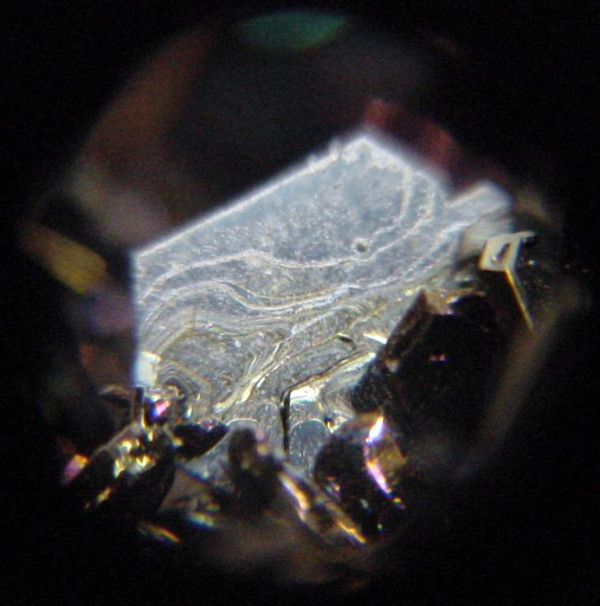 Image credit: Andrew Silver, of silicon carbide in moissanite, via BYU Mineral Specimens 799 USGS Photographic Library.
Image credit: Andrew Silver, of silicon carbide in moissanite, via BYU Mineral Specimens 799 USGS Photographic Library.
Silicon carbide is formed -- it's true -- naturally around asymptotic giant branch (AGB) stars, and so we find tiny dust grains of this compound floating through space. But that's a long way from getting a planet with a crust that's primarily SiC. I won't say "that's impossible," though, I'll just leave it at this: although the laws of physics are the same everywhere, the conditions of the Universe are often surprising in their diversity. And there are an awful lot of chances out there for something rare and unexpected.
From transcendentape: "It may have been accidental, but thanks for including a peridodic table that used both symbols and colors to represent the origin of the different elements. Since I’m colorblind, it would have been meaningless to me without the added cues."
This is one of the tough things to remember when you write as a non-colorblind person: a significant fraction of men in the world have some type of colorblindness. I do my best to explain everything in full in the text, to augment that with images, and to explain the image with a caption if I think it's necessary. (I know there are some of you who think it's necessary more frequently than I do; I don't know what to do about that other than try and learn what appears ambiguous to you.)
There should be lots of ways to get the information I'm trying to convey, and I always appreciate the reminder that some people require different methods of information delivery to arrive at the same end result. Glad I could do right by you this time.
 Image credit: Contemporary Physics Education Project, via http://cpepweb.org/.
Image credit: Contemporary Physics Education Project, via http://cpepweb.org/.
And finally, from Denier on the weak force: "The photon mediates the electromagnetic force while the W and Z bosons mediate the weak force, early in the universe there wasn’t a separate electromagnetic force and weak force. It was a unified electroweak force. Does this also mean there weren’t separate Photons, W bosons, and Z bosons? Does the unification and breaking of the forces also mean a unification and breaking of the force carriers?"
How do I say this? How about with a resounding yes! There are four "electroweak" bosons today: the photon (neutral, massless), the Z (neutral, massive), the W+ (charged, massive) and the W- (charged, massive), split so that the photon carries the electromagnetic charge and the Z, W+ and W- carry the weak charge. But it wasn't always this way...
Before the electroweak symmetry was broken, there were four electroweak bosons: the W+, W0 and W-, along with the B0, all of which were massless. The W0 and B0 had the same quantum numbers and, therefore, mixed together. When the symmetry spontaneously broke via the Higgs mechanism, the W0 and B0 mixed at an angle to create the photon and the Z, with the Z, W+ and W- gaining a huge mass from the Higgs symmetry breaking and the photon remaining massless. This means that any of the three particles -- W+, W-, Z -- is able to carry the weak force, but not the electromagnetic force; the photon is able to carry the electromagnetic force, but not the weak force.
One oddity: the W+ and W- can allow you to change flavor, like for a muon to decay to an electron, or a bottom quark to decay to a strange quark, but the Z cannot! There are no flavor-changing neutral currents (FCNC) in the standard model. (There are, by the way, in extensions like SUSY and GUTs, so the lack of observed FCNCs highly constrain those models.) So, in short, yes, Denier, to your question, and there's a little more detail for you as to how.
Thanks for a great week, everyone, and I'll see you back next week for more wonders, joys, and teachable moments right here in this Universe of ours!

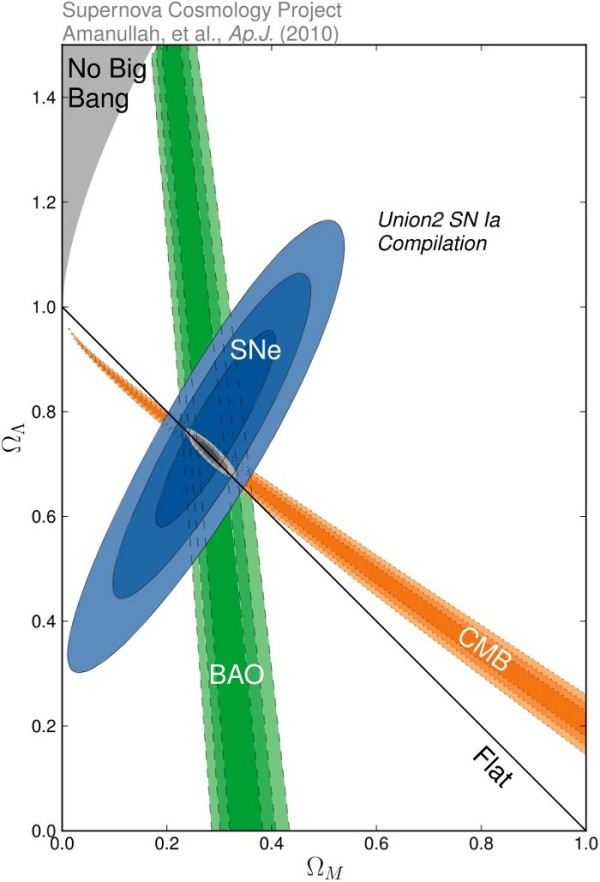
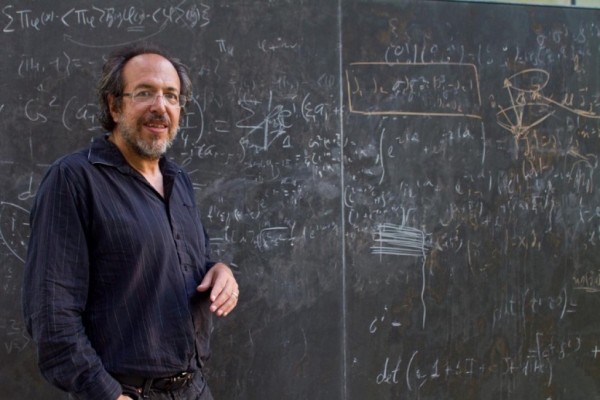
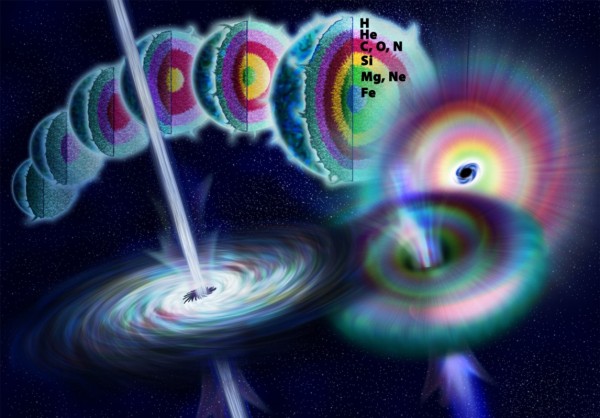
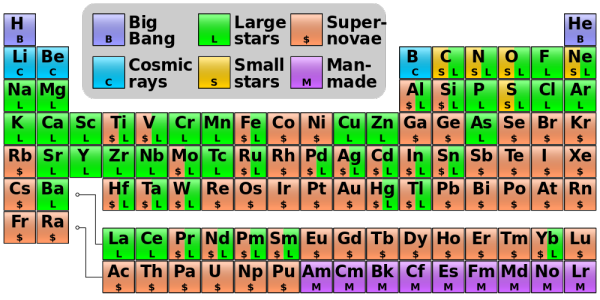
@ Ethan
thanx for addressing my comment about GR giving info (or not giving info) on SM particles. What you wrote here as an answer is all correct. You wrote about properties of gravity and graviton. BUT that is not what you wrote in the original article, hence my original comment. I'm only saying this, because it confuses the reader..
You wrote: "Thanks to the properties of General Relativity itself, there are some things we already know.
The known quantum forces are mediated by particles known as bosons, or particles with integer spin. The photon mediates the electromagnetic force, the W-and-Z bosons mediate the weak force, while the gluons mediate the strong force. All these types of particles have a spin of 1, which for massive (W-and-Z) particles mean they can take on spin values of -1, 0, or +1, while for massless ones (like gluons and photons), they can take on values of -1 or +1 only.
The Higgs boson is also a boson, although it doesn’t mediate any forces, and has a spin of 0...."
I argued that none of the above written is known thanx to GR. What we know about graviton.. yes.. but GR couldn't care less about W & Z bosons
Second.. you have a typo here in the answers article.. The comment made by Lubos is now quoted as some 2 people where one is not even from that article: From DeathThreat McDunderhead: “You’re such a reasonable educated...."
Sinisa,
The link in question was referring to a time in 2011 when Lubos threatened to "destroy my life" right here on my blog. Everyone told me to ban him, and yet I didn't.
But yes, it looks like a typo that I can't quite figure out how to correct. I mean, Lubos Motl / DeathThreat McDunderhead... the keys are practically right next to each other!
"… the keys are practically right next to each other!"
lolz.. :)
didn't know about that previous comment from him from 2011.. read it now.. damn... Might reconsider that ban... after all, he has his own blog where he can troll his nuts out. On the other hand, he made certain a long time ago, that no one with a right mind takes anything he says serious. Especially nothing concerning science.
Thanks, Ethan, for letting my home out. Actually, I have a welcome mat for visitors - pre introduced, and pre-arranged, of course.
Don't worry, PJ, just give the address of someone you want to punk.
Heh, heh, heh .......
Yup! even according to heisunberg uncertainity principle. the spin of the particle can be anything until we observe it. once we observe it changes and becomes constant. But what is dark matter actually can anything be related to it.
"But what is dark matter actually can anything be related to it."
Words fractured sentence there.
But yes, I figure dark matter can be related to something.